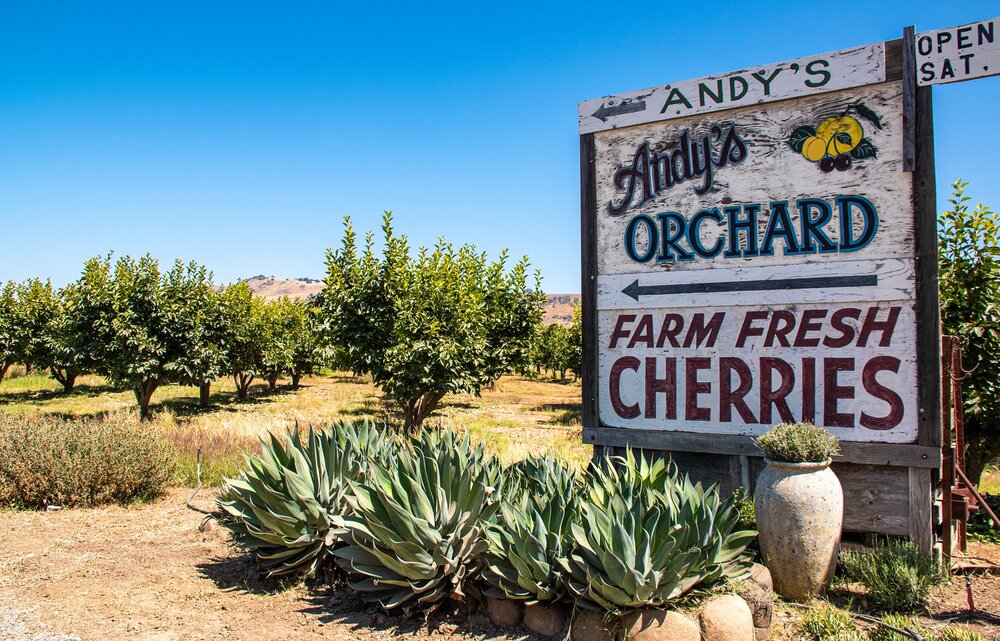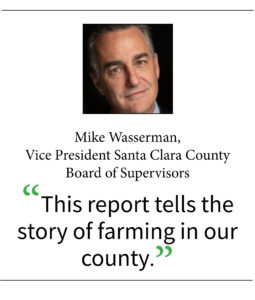Nursery crops regain top farming spot; total ag production tops $305 million

Andy’s Orchard in Morgan Hill. Photo courtesy Visit Morgan Hill.
By Staff Report
Being part of the Silicon Valley’s high-tech world, the southern section of Santa Clara County still has a farming industry that can be seen in the fields and ranches around Morgan Hill and Gilroy. Last year, the region produced more than $305 million in crops.
 Santa Clara County’s Office of the Agricultural Commissioner and the Consumer and Environmental Protection Agency released the 2019 Crop Report highlighting agriculture production valued at $305,067,000, which is an increase of 3.1 percent from 2018.
Santa Clara County’s Office of the Agricultural Commissioner and the Consumer and Environmental Protection Agency released the 2019 Crop Report highlighting agriculture production valued at $305,067,000, which is an increase of 3.1 percent from 2018.
“This report tells the story of farming in our county,” said Mike Wasserman, vice president of the Santa Clara County Board of Supervisors.
Nursery crops regained the top spot as the county’s leading agricultural product in 2019 with $81,215,000 in value, edging out mushrooms ($78,646,000), followed by lettuce ($18,322,000), bell peppers ($12,081,000), wine grapes ($11,545,000), and fresh tomatoes ($10,698,000).
In addition to traditional farming, urban agriculture in the county contributed to local food system resiliency by yielding more than 5,000 pounds of food, donating an average of 1,524 pounds, and engaging with the community by working with 1,754 students and 630 volunteers in 2019. There are 35 community gardens and 51 urban agriculture sites in the county ranging from .25 to 11 acres. Urban agriculture builds community, educates people about food production, improves access to fresh and healthy food, revitalizes vacant lots, and helps citizens get directly involved.
 “This is a step in the right direction for preserving Santa Clara County’s agricultural land,” said Cindy Chavez, president of the Santa Clara County Board of Supervisors.
“This is a step in the right direction for preserving Santa Clara County’s agricultural land,” said Cindy Chavez, president of the Santa Clara County Board of Supervisors.
One of the main goals for urban agriculture is increasing access to fresh produce, especially for those in need. The county is developing a comprehensive food system work-plan at the direction of the board of supervisors. It will address six major components including: expanding access to healthy food resources for families facing food insecurity, supporting food suppliers, expanding use of agricultural land for healthy food production, enhancing infrastructure for manufacturing and processing food, improving policies relating to the procurement, sales, and purchasing of healthy foods, and increasing food rescue.
This work-plan will improve and coordinate the wide array of food system programs and partners to better respond to short-term and long-term food system needs in our communities.
In response to the needs caused by the COVID-19 pandemic, urban farming has increased donations of fresh produce to food pantries. The crop report contains numerous examples of where innovative food producers in the county found creative places to farm and new ways to collaborate to provide healthy produce to our communities.
 Just as volunteers and land play an important role in agriculture, bees also have a critical part in food production. This year a new apiary section was added to the report to show the value of honeybees. There are 775 hives registered in the county, with a total value of $260,000, including beeswax and honey. The county’s agriculture department supports apiaries through the Bee Safe Program that conducts apiary registration, training, and outreach.
Just as volunteers and land play an important role in agriculture, bees also have a critical part in food production. This year a new apiary section was added to the report to show the value of honeybees. There are 775 hives registered in the county, with a total value of $260,000, including beeswax and honey. The county’s agriculture department supports apiaries through the Bee Safe Program that conducts apiary registration, training, and outreach.






